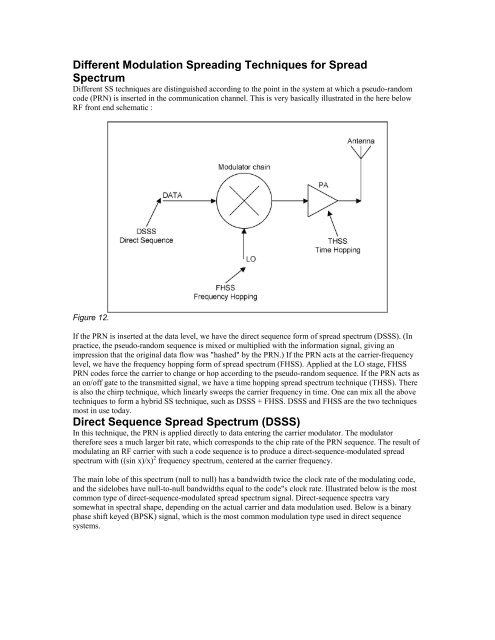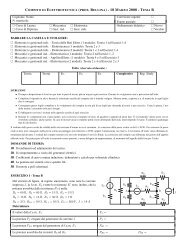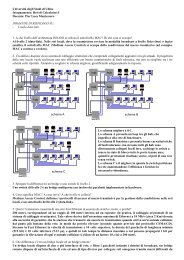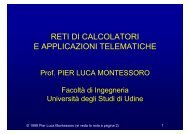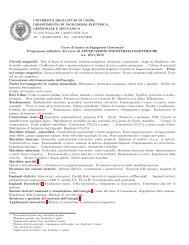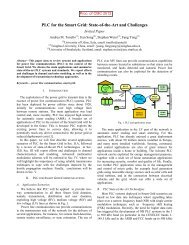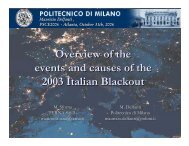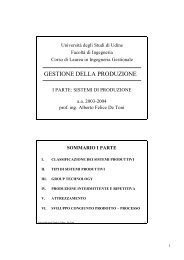An Introduction to Direct-Sequence Spread-Spectrum ... - diegm
An Introduction to Direct-Sequence Spread-Spectrum ... - diegm
An Introduction to Direct-Sequence Spread-Spectrum ... - diegm
Create successful ePaper yourself
Turn your PDF publications into a flip-book with our unique Google optimized e-Paper software.
Different Modulation <strong>Spread</strong>ing Techniques for <strong>Spread</strong><strong>Spectrum</strong>Different SS techniques are distinguished according <strong>to</strong> the point in the system at which a pseudo-randomcode (PRN) is inserted in the communication channel. This is very basically illustrated in the here belowRF front end schematic :Figure 12.If the PRN is inserted at the data level, we have the direct sequence form of spread spectrum (DSSS). (Inpractice, the pseudo-random sequence is mixed or multiplied with the information signal, giving animpression that the original data flow was "hashed" by the PRN.) If the PRN acts at the carrier-frequencylevel, we have the frequency hopping form of spread spectrum (FHSS). Applied at the LO stage, FHSSPRN codes force the carrier <strong>to</strong> change or hop according <strong>to</strong> the pseudo-random sequence. If the PRN acts asan on/off gate <strong>to</strong> the transmitted signal, we have a time hopping spread spectrum technique (THSS). Thereis also the chirp technique, which linearly sweeps the carrier frequency in time. One can mix all the abovetechniques <strong>to</strong> form a hybrid SS technique, such as DSSS + FHSS. DSSS and FHSS are the two techniquesmost in use <strong>to</strong>day.<strong>Direct</strong> <strong>Sequence</strong> <strong>Spread</strong> <strong>Spectrum</strong> (DSSS)In this technique, the PRN is applied directly <strong>to</strong> data entering the carrier modula<strong>to</strong>r. The modula<strong>to</strong>rtherefore sees a much larger bit rate, which corresponds <strong>to</strong> the chip rate of the PRN sequence. The result ofmodulating an RF carrier with such a code sequence is <strong>to</strong> produce a direct-sequence-modulated spreadspectrum with ((sin x)/x) 2 frequency spectrum, centered at the carrier frequency.The main lobe of this spectrum (null <strong>to</strong> null) has a bandwidth twice the clock rate of the modulating code,and the sidelobes have null-<strong>to</strong>-null bandwidths equal <strong>to</strong> the code"s clock rate. Illustrated below is the mostcommon type of direct-sequence-modulated spread spectrum signal. <strong>Direct</strong>-sequence spectra varysomewhat in spectral shape, depending on the actual carrier and data modulation used. Below is a binaryphase shift keyed (BPSK) signal, which is the most common modulation type used in direct sequencesystems.


